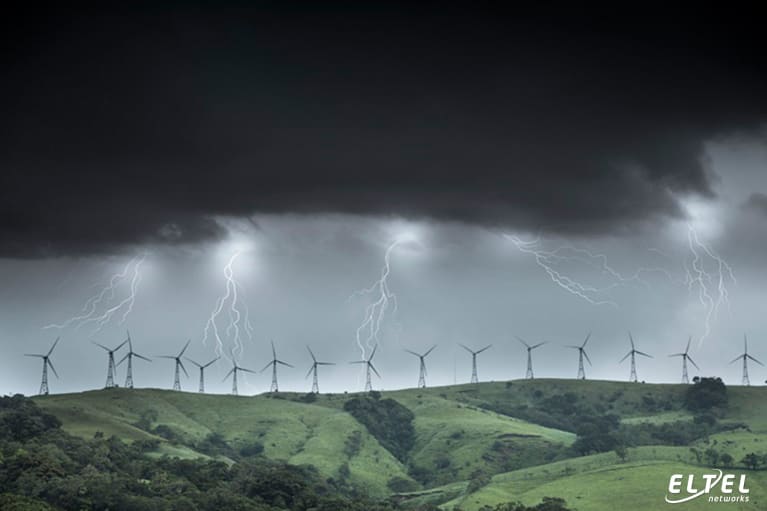
Climate change and energy infrastructure design
Climate change is one of the most serious challenges facing humanity in the 21st century. The impact of climate change can be seen throughout the economy, and one of the main areas feeling it very strongly is the energy sector. How is climate change affecting the design of energy infrastructure and the sector in general?
According to the European Union's goal, Europe is to become the world's first climate-neutral continent by 2050. This is an extremely ambitious challenge, the realization of which seems even more difficult given the current geopolitical situation, growing energy demand and climate change. However, regardless of whether this goal can be achieved within the assumed time horizon, the indisputable issue is the necessity of energy development towards low-carbon, renewable sources, i.e. clean energy. This means investing in renewable energy sources, increasing the efficiency of energy use and thus trying to reduce energy consumption, or investing in modern energy infrastructure.
The impact of climate change on the economy and energy
According to estimates by experts from the Polish Insurance Association, cited in the report “A Climate of Growing Losses. The role of insurance in climate protection and energy transition,” by 2050 the impact of climate change on the Polish economy could result in a relative decline in Polish GDP in the range of 3% to 10%, depending on how rapidly climate change proceeds.
The effects of climate change are not just a matter of the future, as they have been felt by people for many years. Increasingly violent weather phenomena, local droughts, fires, floods, record-breaking heat in Europe - we have to deal with all of these very often, and experts' forecasts predict that they will intensify. In the context of the energy industry, this means that visions of such serious phenomena as a blackout in Poland, for example, the risk of which has been talked about for several years now during periods of hot weather, may finally come true. Especially if appropriate changes are not made. When thinking about energy security, it is important to remember that one of its key aspects today is adaptation to climate change.
Increased investment in RES
One solution that combines both environmental benefits and improves energy security is the development of renewable energy sources. Wind power plants in Poland still have huge room for growth and new investments. Wind farm, photovoltaic installation, biomass energy generation, hydroelectric power plants - all types of RES can be tools for increasing the country's energy security, as well as providing access to clean, green energy, the acquisition of which has a neutral impact on the environment.
The growth of investment in RES in Poland has been evident over the past several years, and in view of the climate challenges, its dynamics should be expected to increase further. This is, of course, facilitated by European Union policies and funding for investment in clean renewable energy sources. Importantly, in the long term, access to energy from RES is expected to ensure greater energy independence for EU countries, as well as to allow limiting the growth of energy prices. In the case of Poland, nuclear energy may also become such a tool to some extent, once the project to build Poland's first nuclear power plant is completed.

Smart power grids
Energy infrastructure design and climate change
With regard to the above-mentioned challenges and developments in the energy sector, it should not be forgotten that one of the tools for implementing all strategies for reducing greenhouse gas emissions, energy mix or increasing energy independence and security is investment in infrastructure. Therefore, it is so important to design power installations thoughtfully and professionally to enable the integration of energy obtained from renewable energy sources into the power grid.
It is also worth noting that energy infrastructure investment projects are increasingly transnational in nature and are often large-scale undertakings. Many of them involve increasing energy transmission or storage capacity. A properly designed overhead line or cable line, which is part of an entire network that also includes substations or power poles, makes it possible to achieve the EU's energy policy climate goals.
Smart power grids as part of climate change adaptation
Smart grids are also one the solutions that foster adaptation of the energy system to climate change, as well as respond to the need to take action to use energy more efficiently. These are solutions that benefit both the environment, consumers and the entire energy system. All because smart grids, thanks to the use of modern technology, automation, measurement and analytical systems, enable optimization of energy consumption.
It should also be noted that smart grids are often a tool that allows the integration of renewable energy sources, such as a wind farm or photovoltaic farm, with traditional grids. Therefore, the design of electric power installations, in the context of adaptation to climate change, should also take into account the use of solutions such as smart grids.
Summary
Not only does climate change directly affect the issue of energy infrastructure design, but it is also a factor in the push for modern and innovative solutions. The range of opportunities in the area of implementing more environmentally friendly and climate-neutral solutions in the energy sector is growing. It is worth taking advantage of it to increase power grid reliability, continuity of energy supply and the level of energy security and independence.
